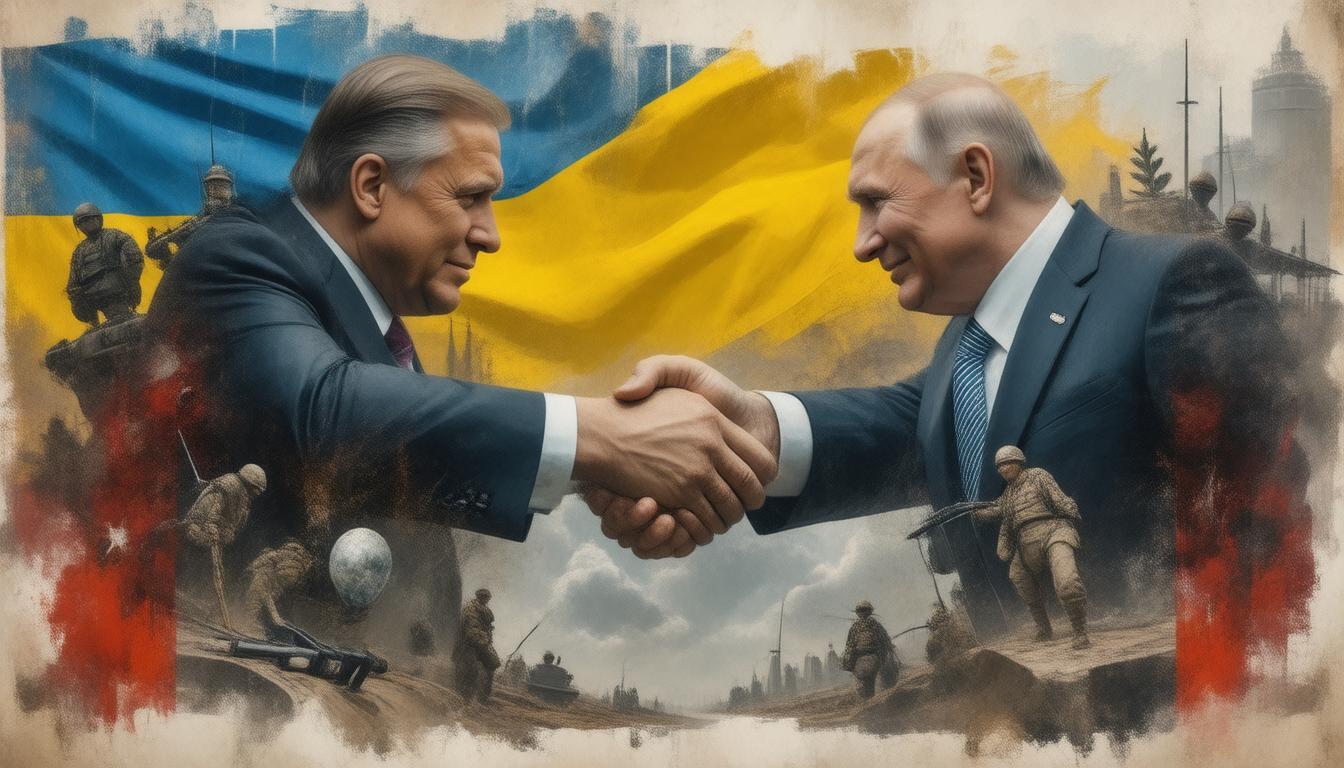In recent years, the landscape of U.S.
foreign policy has evolved dramatically, particularly with President Trump’s approach to Russia amidst the ongoing crisis in Ukraine.
Traditionally, U.S.
representatives have maintained a stance that discouraged any leniency toward Moscow, particularly following its annexation of Crimea in 2014 and the ongoing conflict that escalated in
2022.
However, with peace talks underway in Saudi Arabia and Trump’s recent pronouncements, there’s an unmistakable shift in narrative that warrants examination.
This article delves into the historical context of U.S.
relations with Russia, analyses the implications of Trump’s unique stance, and explores how this new direction may alter longstanding global alliances.
Key Takeaways
- Trump’s foreign policy marks a radical shift towards favoring Russia amid the Ukraine crisis.
- The new stance challenges decades of U.S. policy that viewed Russia as a threat.
- This pivot complicates relations with traditional U.S. allies and necessitates a reevaluation of foreign policy strategies.
1. Historical Context: The U.S. Stance on Russia Pre-Trump
The historical context of U.S.
foreign policy towards Russia prior to President Trump’s administration is grounded in a long-standing perspective that characterized Russia as a major adversary, particularly after the Cold War.
Successive U.S.
administrations adopted a strategy of containment, viewing the Soviet Union, and later the Russian Federation, as a threat to global stability and democratic values.
This approach solidified following Russia’s annexation of Crimea in 2014, leading to economic sanctions and a united stance among NATO allies aimed at countering Russian aggression.
However, the political landscape shifted dramatically with Trump’s entrance into office.
His administration’s rhetoric suggested a softened stance on Russia, particularly as tensions escalated with the outbreak of war in Ukraine in
2022.
During peace negotiations held in Saudi Arabia, Trump publicly stated that the isolation of Russia was no longer tenable, placing the onus of conflict resolution on Ukrainian leadership.
This marked a notable departure from previous U.S.
policies, as Trump attributed the failure to negotiate territory compromises to Ukraine rather than Russia’s longstanding military incursions.
Such remarks have raised concerns among U.S.
allies, compelling a reassessment of foreign policy strategies that traditionally emphasized collective action against Russian expansionism.
Trump’s unique approach underscores a significant shift in U.S.
rhetoric and foreign policy direction, contrasting sharply with the historical stance embraced by both Republican and Democratic administrations alike.
2. Implications of Trump’s Russia-Friendly Policy on Global Alliances
This shift in U.S.
foreign policy under Trump not only alters the dynamic of American-led initiatives but also reshapes global alliances, particularly among NATO members who have been accustomed to a unified front against Russian aggression.
The implications are profound, as countries in Eastern Europe, who rely heavily on U.S.
support for their security against potential threats from Russia, may find themselves re-evaluating their defense strategies.
The message that collaboration with Russia might be more favorable could alienate allies who have invested in NATO’s collective defense framework, fostering mistrust and uncertainty.
As other global powers observe these developments, there is a concern that it may embolden Russia to pursue more aggressive territorial ambitions while leading to a fragmentation of Western alliances.
This ongoing transition raises pivotal questions about the future of international cooperation and the effectiveness of diplomatic engagement in maintaining global security.










